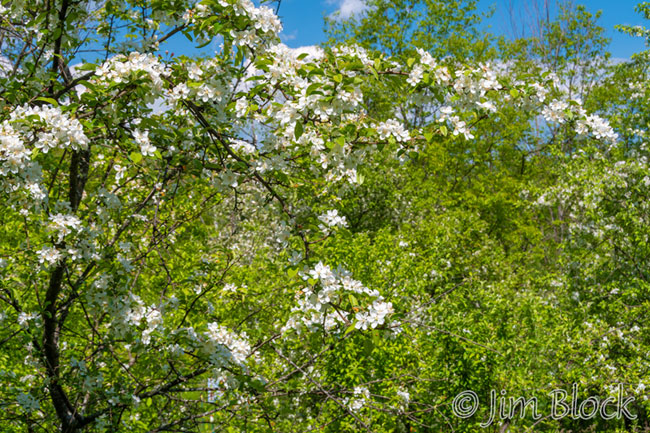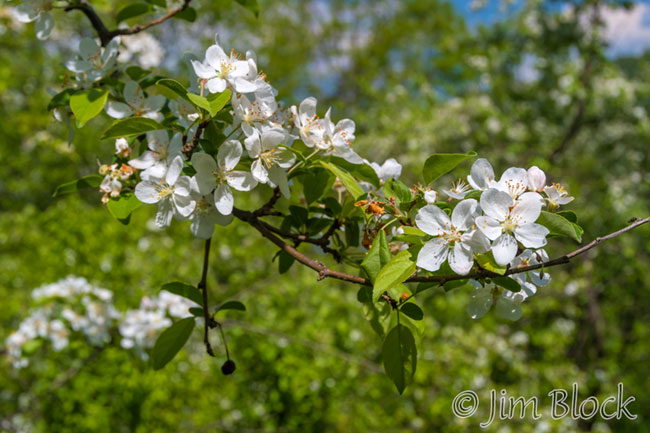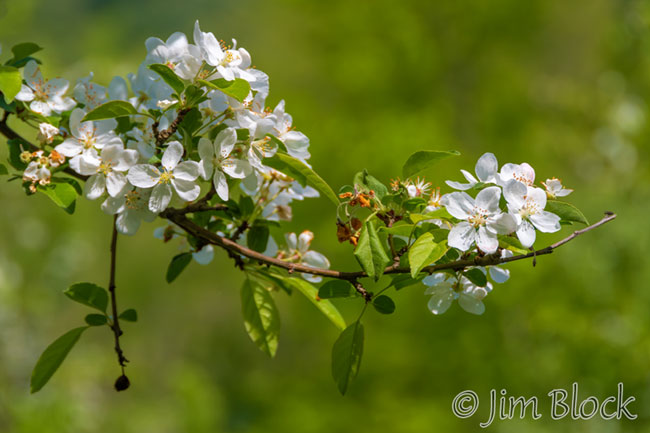I led a photo walk for the Etna Library yesterday for the third time for around 12 folks — I didn’t actually count the number — at the Hayes Farm Park. I made a few comments on composition and light and showed a few photos that I took near the library to illustrate a technique. We then slowly hiked the short distance to the King Bird Sanctuary.
Here are two pairs of photos I took a short time before the walk that I showed the group on my camera monitor. I feel the second of each pair is the better photo. Why? And what did I do to get the second one in each pair?




Hint, I did not change my aperture. All 4 photos were shot at f/8 and, since the subject size is the same in each pair, the depth of field is the same in each pair. I used a very powerful technique that many do not think about. It involves a variable focal length (“zoom”) lens and an accessory you all have. Think about it before you read further.

The first of each pair of photos above was taken fairly close to the subject with a wide angle lens. Hence my camera captured a lot of the background.
For the second of each pair I backed far away from the subject and used a much longer lens. With the much narrower field of view of the longer lens, I got much less background.
This is a very powerful tool for background control in your photos and it involves moving your feet — a lot.
Climbing up into the grove of crabapples I made a pair of photos that illustrate another important technique. It’s easy to practice. You just need to remember to do it. Take both vertical and horizontal photos — you never know which you will like better.
When is the best time to take a vertical photo?

The best time to take a vertical photos is right after you take a horizontal one.
I took three photos of the same crabapple. The one below is very detailed, but it is busy and not a particularly good photo.

For the next one I moved in closer, often a great technique, and got what I feel is a somewhat better photo. But there is too much background.
So what did I do to fix that? You should know the answer if you have been reading this blog.

I backed up and used a longer focal length to get the photo below.

I talked about the importance of light. Some subjects, like birds, work very well with bright front light. Others are normally better when it is not sunny. I love overcast days for photographing people, flowers, forests, and waterfalls.
I took a pair of photos to illustrate. Neither of the pair is a good photo but you can see how different the second photo is when I simply shaded the violets with my body.


Another hint I gave is, “Consider eliminating the sky.” Especially when the sky is blank and featureless, many photos are better if you compose to eliminate the sky.
However, when the sky is dramatic, like it was yesterday, using it as a main part of the image can work very well. Note in both of the barn photos above I placed the barn near the lower third (the “rule of thirds”) to tell the viewer the sky is important in the photo.
I found a spot where I could get a pair of photos to illustrate the “eliminate the sky” principle. We had heard the persistent singing of a Chestnut-sided Warbler. After much searching some of us spotted it. I stood back and made a pair of photos that, hopefully, will convince you the second is better simply because it does not contain a white sky.


Because the day was mostly sunny we did not visit the adjacent Trescott Ridge Wetlands. They are much better on an overcast day. If you want to see some photos of this area, you can CLICK HERE.
Another hint I gave was to focus on detail and simplify. Here are a few examples.
Crabapple blossoms as we entered the area.

A morel mushroom an observant person spotted and a Tree Swallow peeking out if its nest box.


A jack-in-the-pulpit and a detail of a white pine with a dramatic pattern.


Solomon Seal and photographing this plant.


Near the end of the photo walk on a beautiful spring day, we visited a huge old tree.

It was an enjoyable way to spend two hours, in spite of a few black flies.
If you would like to see photos from last year’s photo walk at the Hayes Farm Park, please CLICK HERE. It has more photo tips and examples.
